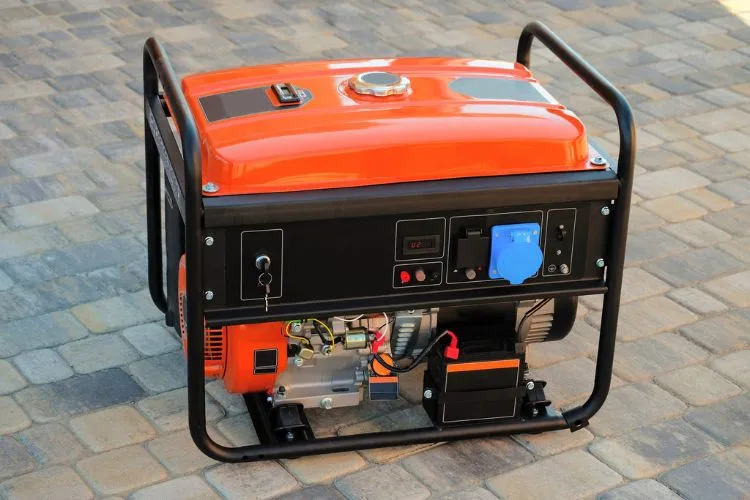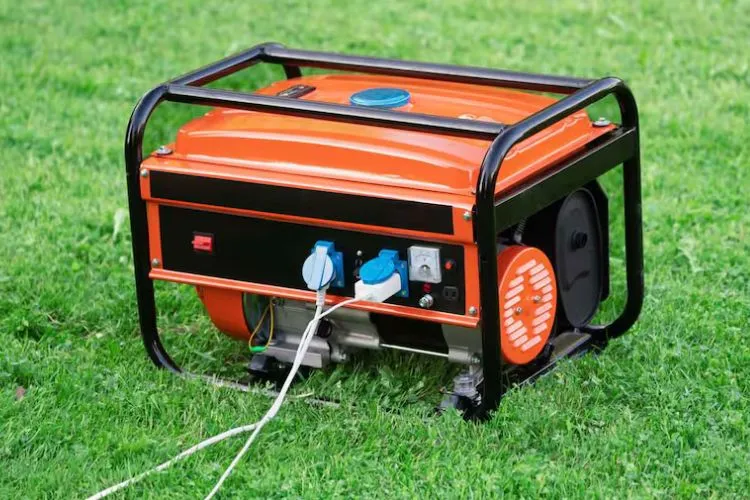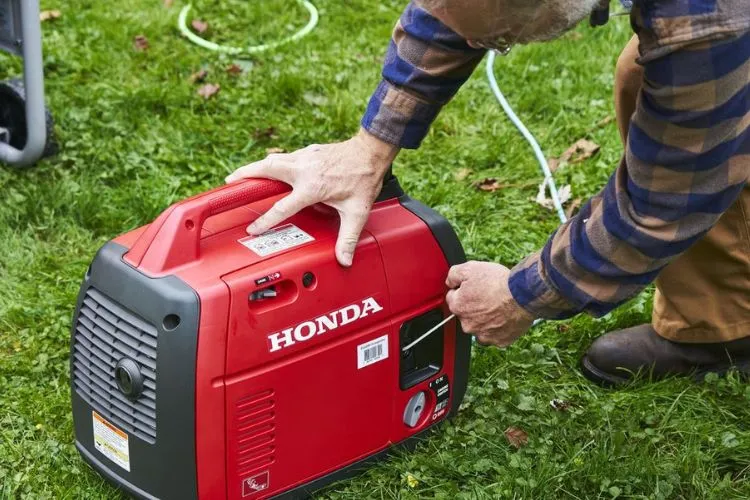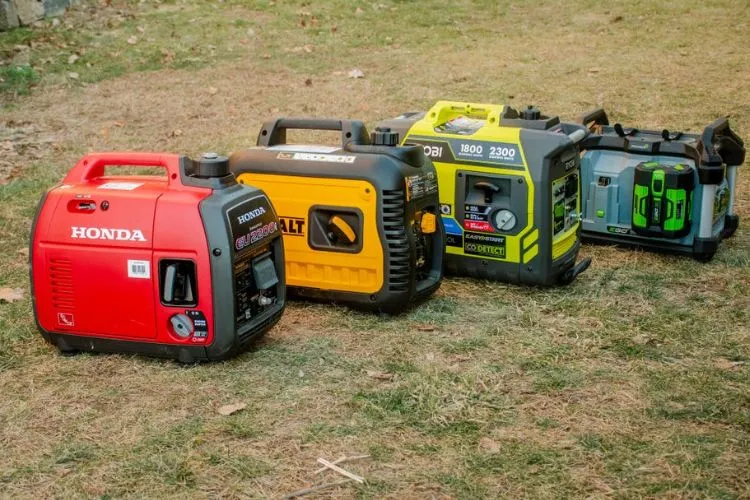In the realm of emergency preparedness and outdoor recreation, portable generators stand out as indispensable tools. They not only offer a lifeline during power outages but also enhance the comfort of camping trips and outdoor events.
However, the benefits of portable generators go hand in hand with the responsibility of understanding their space requirements.
This guide dives into how much space does a portable generator need, ensuring safety, efficiency, and compliance with regulations.

How Much Space Does a Portable Generator Need?
The space a portable generator needs is not just about physical dimensions but about safety and ventilation. Generators emit carbon monoxide (CO)—a colorless, odorless gas that can be deadly in enclosed spaces.
Therefore, operating a generator requires careful consideration of outdoor space to ensure ample air circulation and prevent CO accumulation.
General Guidelines:
Outdoor space requirements serve as a barrier against CO poisoning and overheating of the generator. A rule of thumb is maintaining a minimum clearance of at least 5 feet from all sides, including overhead. This clearance facilitates adequate airflow and heat dissipation, crucial for the generator’s performance and lifespan.
Factors Affecting Space Needs
Several factors can influence how much space a portable generator requires. Here’s a closer look:
- Generator Size and Power Output: Larger, more powerful generators typically require more space for safe operation due to increased heat generation and potentially higher CO emissions.
- Local Climate Considerations: In hotter climates, additional space might be necessary to prevent overheating.
- Manufacturer Guidelines: Manufacturers often provide specific clearance requirements. Adhering to these guidelines not only ensures safety but also maintains warranty coverage.
- Enclosure and Shelter Considerations: If you plan to shelter your generator, ensure the structure offers adequate ventilation and adheres to the generator’s space requirements.
Positioning Your Portable Generator
Choosing the right location for your portable generator is pivotal. Placement should ensure the unit is exposed to open air, away from windows, doors, and vents, to prevent CO from entering living spaces.

Consideration of weather and environmental conditions is also essential. For instance, placing a generator in a low-lying area can be risky during heavy rain, as water can cause electrical hazards or damage the unit.
Legal and Safety Regulations to Consider
Safety standards and legal regulations provide a framework for safe generator operation. For example, the Occupational Safety and Health Administration (OSHA) sets forth guidelines for generator use in work environments, including space requirements and CO safety measures.
Local bylaws may further dictate where and how generators can be used in residential areas. Ignoring these guidelines can result in fines, but more importantly, it can compromise safety.
Maintenance and Clearances
Adequate space is not only a matter of safety during operation but also plays a crucial role in maintenance and longevity of your generator. Proper spacing ensures you have unrestricted access to the generator for regular checks and maintenance tasks, from oil changes to filter replacements.
Additionally, when the generator is not in use, proper storage space can protect it from the elements and extend its life.
Space Considerations in Special Environments
While portable generators are versatile tools useful in a variety of contexts, their deployment in special environments such as boats, campers, and rooftop terraces requires a nuanced approach to space considerations.

Each of these scenarios presents unique challenges and constraints that influence how, where, and which generator should be used.
On Boats
Boats offer limited space and unique safety challenges, particularly regarding ventilation and the risk of carbon monoxide (CO) poisoning. For marine use, it’s vital to choose a generator specifically designed for such environments, ensuring it’s marine-rated to handle the moisture and conditions at sea.
Space must be allocated not just for the generator but also for proper airflow and exhaust systems that direct harmful gases away from living and operational areas. Furthermore, securing the generator sufficiently to prevent movement in choppy waters is a critical space consideration.
In Campers
Portable generators provide the power needed for comfortable living in campers and RVs, but they must be operated safely outside the vehicle to avoid CO buildup.
Space planning involves finding a balance between accessibility and safety, ensuring the generator is far enough from the vehicle to prevent exhaust from entering through windows or vents but close enough to connect easily to power needs.
Additionally, considering noise levels is crucial to maintain the tranquility of your camping experience. Portable generators used within campgrounds often have quiet technology and should be positioned to direct noise away from sleeping areas.
On Rooftop Terraces
The increasing popularity of urban gardening and outdoor living spaces has prompted the use of portable generators on rooftop terraces for lighting, cooking, and entertainment. Here, space considerations involve not only safety and ventilation but also weight and structural integrity.
A lightweight generator that occupies minimal space is ideal. Ensuring that the generator is positioned away from doors and windows to prevent CO from entering the building is critical.
Moreover, sound insulation techniques might be necessary to minimize disturbance to neighbors. Because rooftops are exposed to the elements, protecting the generator from weather while ensuring ample airflow for cooling and exhaust is a multifaceted challenge.
Key Takeaways for Special Environments
- Safety First: Regardless of the environment, the primary concern should always be safety, particularly relating to carbon monoxide poisoning and fire hazards.
- Ventilation and Exhaust: Ensure that wherever the generator is placed, there is sufficient space for air circulation and proper exhaust routing.
- Compliance and Adaptation: Use equipment that’s designed or rated for the specific environment and comply with any additional regulations that might apply.
- Noise Consideration: Especially in communal environments like campgrounds or densely populated areas, the generator’s noise impact should be a critical part of space planning.
Understanding and taking into account these specialized space considerations ensures that portable generators can be used effectively and safely, maximizing convenience without compromising safety or comfort.
Pro Tips for Maximizing Portable Generator Use
While following the baseline requirements for generator spacing is vital, there are additional steps you can take to maximize the safety and efficiency of your portable generator:

- Ventilation Hacks: Explore options like portable generator tents or custom-built enclosures designed to maintain ventilation while protecting the generator from harsh weather.
- Sound Reduction: Consider using sound-deflecting panels or installing the generator away from living areas to minimize noise disruption.
- Protecting Your Generator from the Elements: Use weather-resistant covers and store your generator in a dry, elevated place to avoid water damage and rust.
Frequently Asked Questions (fAQs)
How much space does a portable generator need?
As a general rule, maintain at least 5 feet of clearance on all sides of your portable generator, including overhead, to ensure proper ventilation and safety.
Can I use a portable generator in a garage with the door open?
No. Even with the door open, a garage does not provide the necessary ventilation for safe generator operation. Always operate generators outdoors, away from buildings.
How does weather affect my generator’s space needs?
Weather conditions, particularly extreme heat or rain, can necessitate adjustments in how and where you position your generator. Always ensure your setup allows for adequate ventilation and keeps the generator dry.
Conclusion:
Understanding the space requirements for portable generators is a fundamental aspect of their safe and efficient use. Whether you’re a homeowner seeking backup power during outages, a contractor powering tools at a job site, or an adventurer relying on electrical power in the wilderness, respecting the space needs of your portable generator is paramount.
By adhering to the guidelines outlined above, you can enjoy the benefits of your generator while ensuring the safety of your surroundings and compliance with legal standards.
In sum, the key to maximizing the utility of a portable generator lies in balancing its operational requirements with the imperatives of safety and efficiency. Through mindful placement, adherence to guidelines, and regular maintenance, your portable generator can serve as a reliable resource for years to come.
